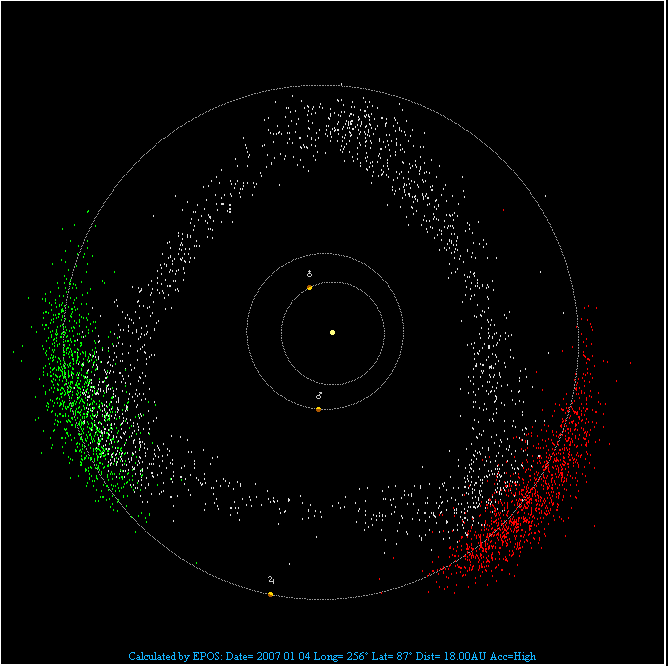- 2023: Moon missions begin
- 2025: Mars uncrewed supply mission
- 2026: Permanent Moon base
- 2026: Earth orbital fuel depot
- 2027: Mars uncrewed supply mission
- 2028: Moon mining & fuel depot
- 2029: Mars 1st crewed mission
- 2030: Earth / Moon L1 Lagrange point fuel depot
- 2031: Mars long-mission settlers/workers
- 2032: Near-Earth asteroid catch
- 2033-2040: Mars base expansions & permanent settlers
- 2035: Near-Earth asteroid small-scale mineral extraction
- 2038: Near-Earth asteroid boulder extractions & relocation to Moon orbit
- 2042: Moon orbit nickel-iron smelting station
- 2050: Moon orbit L4/L5 Lagrange point ship construction yard
- 2055: Sun/Earth orbit L4/L5 Lagrange point fuel depots
-
Moons: Phobos & Deimos:
-
Orbit Period (time around sun): 687 days
-
Surface Temp: -87 to -5 °C, -125 to 5 °F
-
Mars is in opposition to Earth when Earth is between Mars and the Sun. This is an ideal time for travel between the planets:
-
- 2020 (OCT)
- 2022 (DEC)
- 2025 (JAN)
- 2027 (FEB)
- 2029 (MAR)
- 2031 (MAY)
- 2033 (JUN)
- 2035 (SEP)
- 2037 (NOV)
- 2040 (JAN)
- 2042 (FEB)
- 2044 (MAR)
- 2046 (APR)
- 2048 (JUN)
- 2050 (AUG)
- Asterank.com
- According to CNEOS, “It has been estimated that the mineral wealth resident in the belt of asteroids between the orbits of Mars and Jupiter would be equivalent to about 100 billion dollars for every person on Earth today.” (roughly 700 Quintillion USD)
- Most of our solar system's asteroids reside in the "asteroid belt", between the orbits of Mars and Jupiter
- Jupiter's large gravity well contributes to the cluster of asteroids in the belt, and many asteroids gather around Jupiter's L4 & L5 Lagrange points:
Most asteroids are solid, indicating that they must have been molten at some point in their existence. Others are ‘rubble piles’. This means that they are loose collections of ‘pieces’, held together by the force of their gravity. These asteroids were formed in collisions.
There are millions of asteroids in our solar system. Some scientists estimate the asteroid belt has between 1.1 and 1.9 million asteroids larger than 1 kilometer (0.6 mile) in diameter, and millions of smaller ones. Most of the undiscovered asteroids are likely the smaller ones (less than 100 km across) which are more difficult to detect. Other astronomers estimate there are over 150 million asteroids in the entire solar system. New asteroids are being discovered all the time.
Most asteroids are made of rock—with some composed of clay and silicate—and different metals, mostly nickel and iron. Other precious metals have been found on some asteroids, including platinum and gold. A wide variety of minerals have also been found on various asteroids including olivine and pyroxene, which are also found on meteorites that have landed on Earth. Most asteroids contain vast amounts of carbon, which means they closely follow the elemental composition of the sun. There are indications that asteroids also contain water or ice in their interiors, and observations by the Dawn mission shows indications that water may have flowed across the surface of Vesta.
- C-type (carbonaceous) (75% of asteroids): clay and stony silicate rocks
- S-type (silicaceous) (17% of asteroids): silicate materials and nickel-iron
- (X) M-type (metallic) (most of remaining asteroids): mostly nickle-iron




